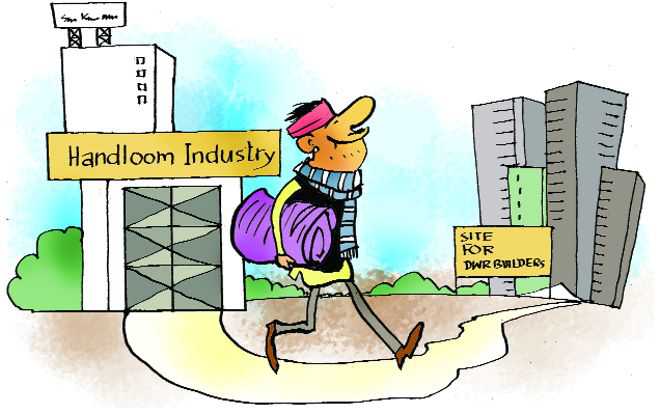Panipat handloom units turn to shuttle-less looms
Vijay C Roy
Tribune News Service
Chandigarh, January 7
As weavers from Uttar Pradesh, Bihar and West Bengal are shying away from taking jobs in labour-intensive handloom cluster in Panipat, many of the units in the beleaguered cluster are facing stagnation in exports and importing shuttle-less looms from European countries.
Shuttle-less looms are used to produce fashionable fabrics with high production rate and efficiency. It reduces the labour cost due to higher productivity. While a handloom costs Rs 15,000, a second-hand shuttlesless loom is priced at Rs 5 lakh onwards.
“The industry is dependent heavily on weavers from Uttar Pradesh, Bihar and West Bengal, besides local labour. For the past few years, the industry is facing shortage of labour and stagnation in exports. While many of the units still stick to their roots by manufacturing handloom products, some of them have diversified and imported second-hand shuttle-less machinery as new machines are very costly,” said Flora Exports managing director Sukhmal Jain.
Around a decade ago, 90% of the handlooms in the country were in Panipat. According to manufacturers, though it is difficult to estimate, but almost 10-15% of the units in the city are shuttle-less looms.
Panipat has around 50,000 handlooms and the total quantum of exports is around Rs 2,000 crore which is stagnant for the past many years. The units engaged in handloom products export bath mats, rugs, tufted bath mats, hand-tufted carpets, table covers and mats to the USA, France, Canada, Japan, Spain, Germany and Australia.
Industry insiders say Mahatma Gandhi National Rural Employment Guarantee Act (MGNREGA) has led to the labour shortage, as many of the weavers who are normally migrants from Uttar Pradesh, Bihar and West Bengal prefer to stay in their respective states rather than coming to Panipat to take up job in the handloom cluster.
“The industry is not only facing shortage of labour but also higher labour cost. On an average, a labourer is paid around Rs 700-800 per day. Due to this, our products are uncompetitive in the international market and it is difficult to survive as cheaper imports from Pakistan and Bangladesh are giving tough competition to Panipat handloom exporters,” said Panipat Exporters Association president Lalit Goel.
Pertubed over the stagnant exports, the exporters have suggested that the government should introduce Rebate on State Levy (RoSL) on the lines of garment industry to boost the exports. For the garment sector, RoSL was introduced to compete with neighbouring countries. The neighboring countries such as Bangladesh and Pakistan have duty advantage over India as they had signed Free Trade Agreement (FTA) whereas India is yet to sign the FTA with EU. “The industry wants that handloom industry should be competitive and the Centre must compensate for state levies and taxes which are not refunded through the mechanism of duty drawback,” Goel said.
Handloom industry
50,000 Number of units
Shuttle-less looms
5,000-7,500
Rs 2,000 crore Exports (approx)










